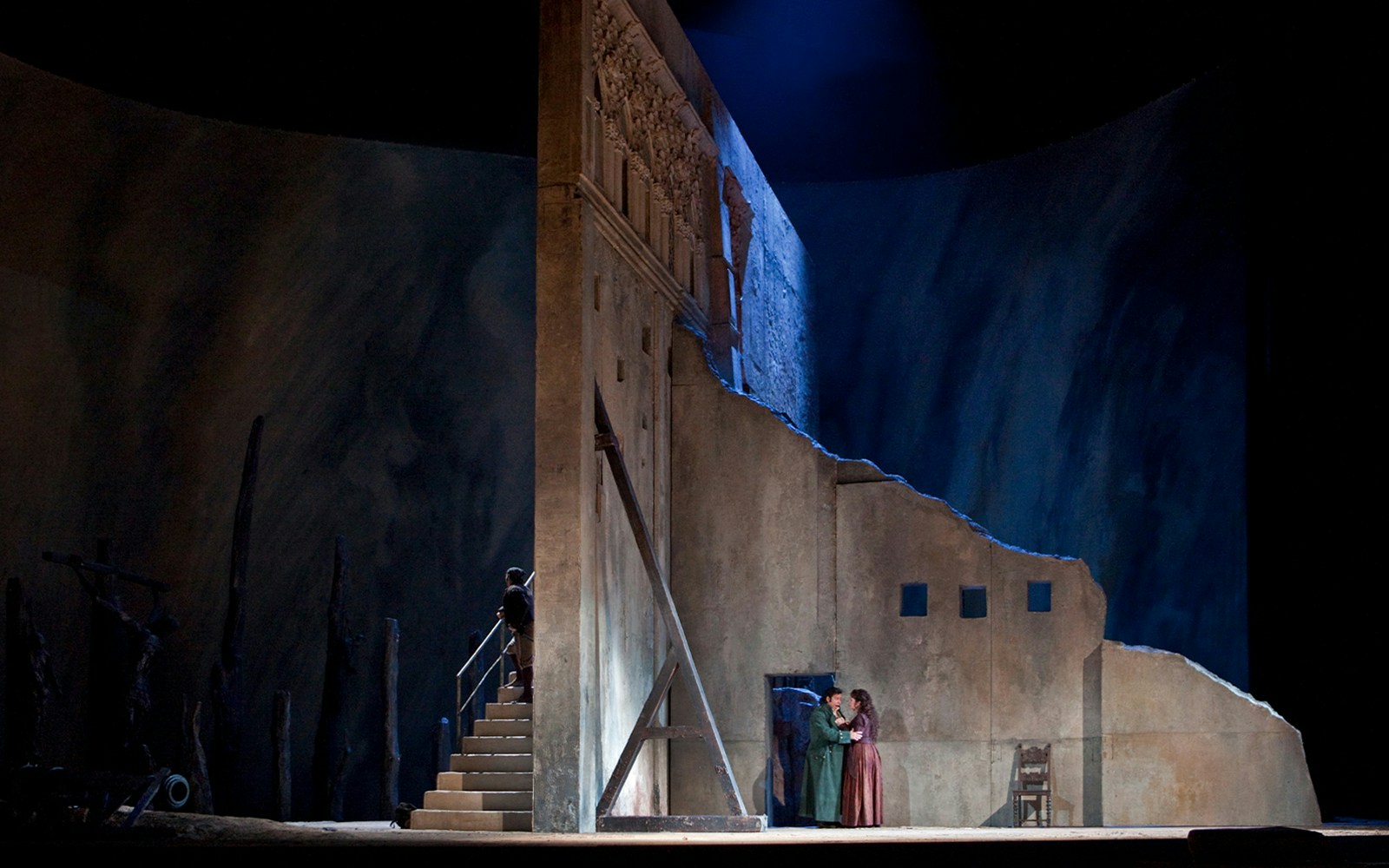











Verdi’s brooding drama is all about forbidden love and a tormented family. Set on a Goya-inspired stage, this opera is based in civil-war torn 15th century Spain.Verdi’s score for Il Trovatore is a manifestation of the depths of its drama, with uninhibited scores and violent emotions. No one can be trusted in this opera, with conflicted loyalties, fickle friends and even less trustworthy fortune. Who will survive the bloodshed?
Manrico the Troubadour and Count di Luna, a military commander, are now locked in a fierce competition to win the affections of Leonora. Manrico is head over heels for Leonora, but the jealous Count is determined to possess her no matter what. The Count's army and Manrico's men are locked in a bloody battle, and eventually, they decide to settle their differences with a good old-fashioned duel. Characters will die, but definitely not the ones you expect!
Azucena, Manrico's mother, is haunted by a secret that deeply affects both Manrico and the Count. Azucena vowed to get revenge on the Luna family and in the heat of the moment, made a violent and irrevocable decision. Will she ever reveal this crime or will she go all out for revenge no matter what?
Note: Producers can not guarantee the appearance of any particular artist, which is always subject to illness and holidays.
Il trovatore is probably best known for the ‘Anvil Chorus’, Azucena’s ‘Stride la vampa’ (The flame crackles!) and Manrico’s heroic ‘Di quella pira’ (The flames of the pyre). But every one of Verdi’s leads are given their moment to shine in this opera, intended to communicate love and insanity.
The aristocratic ‘Il balen del suo sorriso’ (The flashing of her smile) gives a rare moment of humanity to the Count, and Leonora’s prayer ‘D’amor sull’ali rosee’ (On the rosy wings of love) is heartrending. You can listen to other songs from different acts on the Spotify link below.
In 1883, a group of businessmen decided to create their very own theater on Broadway and 39th Street, and now the Metropolitan Opera House, Lincoln Theater is the largest classical music organization in North America. The Met Opera is the biggest opera house in the world, with over 4000 seats. A place for opera in its original language now, the stage is best known for its amazing acoustics (and how massive it is!)
The brand new Metropolitan Opera House at Lincoln Center made its grand entrance in September 1966, with state-of-the-art technology. Ever since,they have been continuously upgrading, for the best in comfort and beauty. It’s a stage you cannot miss out on!
Metropolitan Opera House seating plan will help you find the best seats in the theater.
Address : 30 Lincoln Center Plaza, New York, NY 10023, United States
Subway : The nearest subway station to the Metropolitan Opera is Lincoln Center Station, taking the No. 1 train to 66th Street, a 2 minute walk away
Bus : The closest bus stations are W 57 St/10 Av, a 2 minute walk from the Met Opera and serviced by the M5, M7, M10, M11, M20, M66, M104 or BxM2 lines.
Available Facilities : Bars, coat check, Grand Tier Restaurant, Met Opera shop
Accessibility : Wheelchair access, accessible restrooms, access parking, companion seats, listening devices, access performances, service dogs allowed, breathing devices allowed
The cost of the tickets starts from $103 and will vary depending on the type of seats you choose.
The show does not have a strict age limit. However, the play contains references to sexual assault, sexual violence, child abduction, and poisoning. The play also contains depictions of decapitation, death, and war.
The show is playing at the Metropolitan Opera, Lincoln Centre
Verdi’s Il Trovatore weaves a tale of seduction, murder and romance while exploring themes of unrequited love and the bitterness of revenge.
The running time is 2 hours 55 minutes.